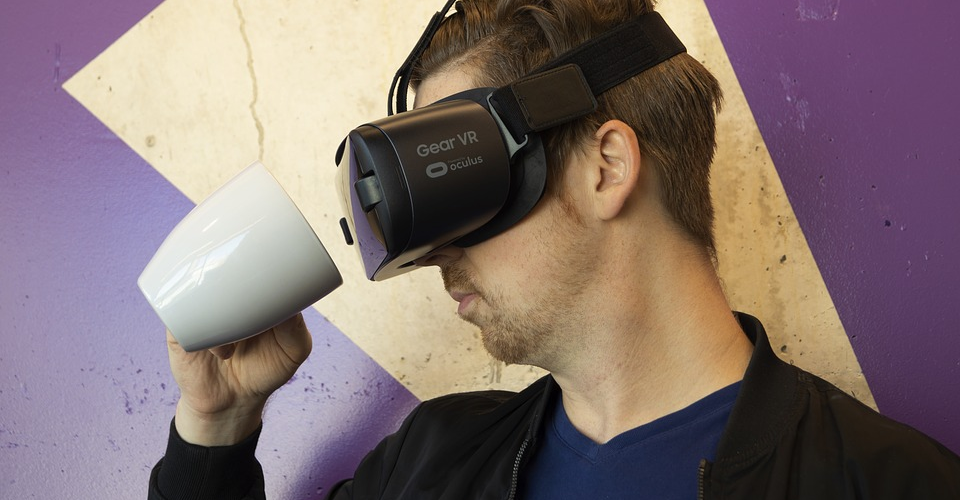Oculus vs. HTC Vive vs. PSVR: Which one is the best in 2019?
Although VR entertainment still feels like a niche with a lot of unfulfilled potential, the market for VR headsets has now thrived more than ever. From the humble cardboard-style headsets of 2014, there are now VR headsets with a vast array of sensors, handheld controllers, and accessories that extend its scope.
If you’re in the market for a new VR headset, then there are three names that probably come up more often than any other: PSVR, Oculus, and HTC Vive. What does each brand offer? Which of these brands is pulling ahead of the pack in 2019?
The roundup
| Parameter | Samsung Gear VR | Oculus Rift S | Oculus Go | Oculus Quest | HTC Vive Pro | HTC Vive Cosmos | PSVR |
| Type | Smartphone-based | Wired | Wireless | Wireless | Wired | Wired | Wired |
| Platform | Select Samsung phones | PC | Standalone | Standalone | PC | PC | PlayStation 4 |
| Display type | Varies | LCD | LCD | OLED | AMOLED | AMOLED | OLED |
| Resolution | Varies | 2560 x 1440 | 2560 X 1440 | 2880 x 1600 | 2880 X 1600 | 2880 x 1700 | 1920 x 1080 |
| Refresh rate | Varies | 80 Hz | 72 Hz | 72 Hz | 90 Hz | 90 Hz | 120 Hz |
| Tracking | 3DOF | 6DOF | 3DOF | 6DOF | 6DOF | 6DOF | 6DOF |
| Approx. price | $99 | $399 | $199 | $399 | $799 | $699 | $399 |
Between Oculus, HTC VIve, and PSVR, there are now VR headsets at a variety of prices and hardware requirements. Whether you simply have a smartphone or the latest gaming PC rig, there’s still a headset that you can get to refresh your entertainment experience with some VR technology.
The Samsung Gear VR is still one of the most budget-friendly ways to get into VR, but we recommend adding just $100 more (which is less than what a Samsung smartphone costs) to get the standalone Oculus Go.
The Oculus Rift S, Oculus Quest, and PSVR all cost about the same but cater to different audiences. Obviously, the PSVR is the most practical option for big console gamers. The Quest is essentially an upgraded version of the Go, although the addition of Oculus Link may make it much more versatile. The Oculus Rift S is a continuation of the classic Oculus Rift line – something for those who prefer doing VR the old-fashioned way.
The HTC Vive Pro enjoyed a few years of success, but the recently revealed HTC Vive Cosmos may just push it out of relevance. With no need for external sensors, upgraded controllers, and a lower price tag, it’s clearly the superior choice. An AMOLED display and higher resolution and framerate are some of its advantages over the Oculus counterparts, justifying a price tag that is $300 higher.
Oculus
Humble beginnings and the first Oculus Rift
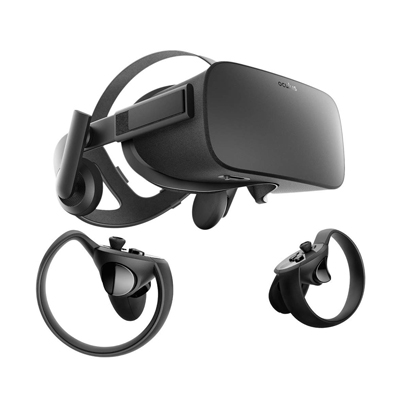
As the brand that started it all, Oculus deserves the first spot in this discussion. The concept of the first Oculus Rift was announced way back in 2012 in a campaign to raise funds for development via Kickstarter. With the success of the campaign in raising $2.4 million, the first Oculus Rift headset was eventually launched in 2016.
In 2014, Oculus was acquired by Facebook. With the capital and technology infrastructure behind it, Oculus was poised to become a huge name in the VR entertainment industry.
The first-generation Oculus Rift was a huge success, with figures stating that it sold at a rate of four to five headsets per minute on the first day. After a few months, the Oculus Rift was augmented with the Oculus Touch handheld controllers and the Oculus Rift Earphones, which were sold separately.
Samsung Gear VR
In 2014, Oculus collaborated with Samsung to develop the Samsung Gear VR, another smartphone-based VR headset made especially for Samsung phones. The partnership with Oculus meant that Gear VR users had access to the Oculus Home portal for VR content. This richness of VR games and experiences further sparked interest in VR technology.
As a testament to the success of the Gear VR, six iterations of the headset were released from 2014 to 2017, culminating in the SM-325, which came with a Gear VR handheld controller. However, there’s only so much that Samsung can do with a VR headset that is basically a pair of lenses and a cradle for a smartphone. The Gear VR has stagnated since 2017, and Samsung seems to have no plans to release an upgraded version anytime soon
Oculus Rift S
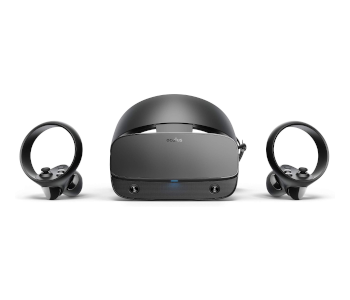
The first upgrade to the original Oculus Rift was released in 2019. The Rift S featured completely new hardware, upgraded sensors, and a new version of the Oculus Touch handheld controllers. The design of the Oculus Rift S was done by Lenovo, incorporating a halo-style harness instead of the usual T-shaped straps.
Like the first Oculus Rift, the Rift S had to be hooked up to a gaming PC to work. The 2560 x 1440 LCD screens were a huge upgrade, although the 80 Hz refresh rate falls a little short of the 90-Hz standard for seamless VR gaming. The Rift S also came with integrated audio, so you no longer had to hook up any external headphones or earbuds, although the option is still available via the 3.5 mm. port.
One of the best new features that came with the Oculus Rift S was the enhanced 6 degrees of freedom (DOF). This meant that the headset not only tracked where you were looking and the rotation of your head, but it could also simulate your movement in three-dimensional space. With the Guardian system, you can define the extent of your play space using the handheld controllers. And yes, you can use up an entire room to play with the Oculus Rift S.
Because of the room-scale capabilities of the Oculus Rift S, it became necessary to outfit it with a few safety measures. The Guardian system defines the boundary of your play space and lets you know if you’re veering outside of it. The Passthrough+ feature uses the headset’s cameras to give you a stereoscopic view of your external environment, should you go outside your pre-set boundaries.
With a launch price of about $400, the Rift S sits somewhere between the PSVR and the HTC Vive headsets in terms of cost. This product is in a unique position in the VR headset market, and curiously enough, its biggest rival is another Oculus product – the Oculus Quest.
Standalone VR headsets
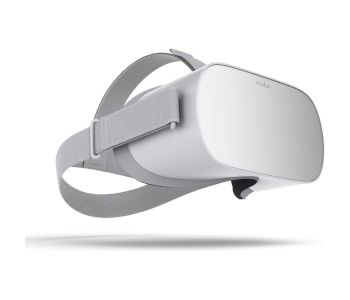
The first attempt of Oculus to go into standalone headsets resulted in the Oculus Go, launched in October 2017. It came with an integrated Snapdragon 821 graphics processor and a 2560 x 1440 LCD screen. It did not use an Oculus Touch controller but, instead, came with a small laser pointer-sized controller for basic interaction. It also only had three degrees of freedom.
Despite some hardware limitations, the Oculus Go was a success. Oculus even formed a partnership with Xiaomi to launch the Oculus Go in Chinese markets as the rebranded Xiaomi Mi VR.
In 2019, Oculus launched their second standalone VR headset: the Oculus Quest. With an upgraded Snapdragon 835 processor, a 2880 x 1600 OLED screen, 72-Hz refresh rate, six degrees of freedom, and the Oculus Touch controllers, the Oculus Quest headset proved to be a revolutionary product for the company.
The Oculus Quest proved to be a massive hit for Oculus. Mark Zuckerberg has gone on record to state that, at one point, Quest headsets were being sold faster than they could make them.
The standalone design was easily the most appealing characteristics of the Go and Quest. Without the need for a gaming PC or a console, these headsets were much more affordable and were ready to be used right out of the box. It also eliminated the frustration of having to move around while VR gaming with a thick cable trailing right behind you.
However, the integrated processor meant that the standalone VR headsets – even the Quest – could not maximize all the content that Oculus has created over the years and made available in the PC-based Oculus Rift store. However, Oculus has one more surprise up its sleeve – the Oculus Link
The Oculus Link upgrade
Announced during the Oculus Connect 6 event, Oculus Link is a software upgrade that will be rolled out to the Oculus Quest, which will allow it to be used with a gaming PC via a USB-C connection. Understandably, this was big news for the VR industry. With this upgrade, an Oculus Quest headset can effectively be turned into an Oculus Rift – albeit with a lower refresh rate.
It remains to be seen if there will be issues with latency, but this is a move that put the Oculus Quest ahead of all other VR headsets in terms of versatility. More importantly, the success of Oculus Link could be the blueprint for all other future Oculus headsets.
The perfect blend
It seems that the formula for success of Oculus has been to target the middle ground. They may not have the best hardware, nor are they the cheapest headsets, but they strike a perfect balance that gives their headsets a much wider mass appeal.
In fact, it can be argued that everything the Oculus Rift S can do, an HTC Vive Pro can do better. However, the Vive Pro costs nearly twice as much – a fact that buyers will certainly not overlook.
The Oculus Quest with Oculus Link upgrade might be the chance for Oculus to offer something unique – something that no other VR headset has been able to accomplish before. The Quest is already one of the most successful products, and it seems that Oculus is going all-in on this hand.
HTC Vive
Coming in strong
HTC Vive is a collaboration between two entities seemingly destined to come up with their own VR headset: phone manufacturer HTC and game developer Valve. Although their entry into the market was somewhat of a surprise, they made their mark right away with the first HTC Vive headset.
In almost all aspects, the HTC Vive was superior to the first-generation Oculus Rift. It had a 2160 x 1200 OLED screen, a 90-Hz refresh rate, and the Lighthouse tracking system which consisted of base stations that can be used to expand your play area.
There was a price to pay for all of the superior features, though – the HTC Vive was launched at $799, making it even more expensive than an average gaming PC or a gaming console. HTC also released a Business Edition of the Vive on the same year, priced at $1200, which comes with a license for commercial use.
Leading with superior technology
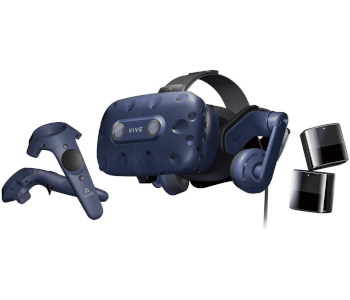
From the onset, it was clear that HTC Vive had no intention of catering to potential VR users who were looking ‘budget’ headsets. True to form, the HTC Vive Pro was launched in January 2018 with the same $800 introductory price.
The HTC Vive Pro was another demonstration of premium features that made the headset stand out in a market of budget-friendly headsets. It retained a satisfying 90-Hz refresh rate but upgrade the screen resolution to 2880 x 1600. The OLED of the Vive was upgraded to AMOLED in the Vive Pro, and the improvement in pixel density, brightness, and overall immersion were all very palpable.
The single outward-facing camera of the original Vive was now upgraded to two, allowing for better pass-through video and augmented reality experiences. The Vive Pro also had removable built-in headphones with noise-canceling features.
The Vive Pro is compatible with the controllers and Lighthouse trackers of the first-generation Vive, so those who owned the original bundle had the option of buying the headset only for $800. However, those who were coming into the Vive Pro ecosystem had to deal with a somewhat overwhelming price tag for the bundle that included the controllers and trackers – all for $1400.
HTC also released a variant of the Vive Pro that came with eye-tracking features, called the HTC Vive Eye Pro. As you would expect, this was a very expensive headset with a launch price of $1600.
With steep price tags all around, the HTC Vive Pro was firmly targeting the market of professional users, early adopters, and hardcore VR enthusiasts. There was no doubt that the Vive Pro outclassed anything that Oculus had at that time, but the cost of the headsets and peripherals severely limited the reach of the Vive Pro headsets.
Into the cosmos
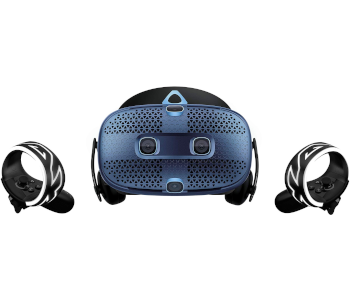
Launched in October 2019, the HTC Vive Cosmos is the latest headset from the HTC Vive line. The step from the Pro to the Cosmos was much larger than what the Pro took from the original HTC Vive. This headset no longer needed the Lighthouse tracking system, instead relying on internal sensors for full three-dimensional tracking.
This was also the first HTC Vive headset to come with upgraded controllers, which are quite reminiscent of the new Oculus Touch controllers.
Again, the Vive Cosmos retains the 90-Hz refresh rate, which is still faster than what the Oculus Rift S offers. Its display resolution is also slightly better at 2880 x 1700. Like the Vive Pro, the Vive Cosmos comes with built-in headphones, which you may remove if you want to use your own peripherals.
The Vive Cosmos launched at $699, making it slightly cheaper than the original HTC Vive and the Vive Pro back when they were launched. The fact that the Cosmos no longer relies on external trackers makes the Cosmos quite a compelling product.
A diminishing spot in the market
The Vive Pro was a very successful headset for HTC Vive, so there appears to be no reason for the cheaper and much better Vive Cosmos to not achieve the same level of success. However, the landscape of the VR headset market has changed greatly since the Vive Pro.
As the sales of the Oculus Quest show, people are willing to settle for a headset with slightly lower specs if it meant saving up to $300. The Vive Cosmos will still have its market, of course, especially as HTC starts to phase out the Vive Pro. However, technology is starting to catch up with HTC Vive, and they are no longer alone in the top tier of VR headsets with the entry of the Valve Index.
PSVR
For the players
The PSVR (or PlayStation VR) is the only VR platform compatible with the PlayStation 4 gaming console, including the Slim and Pro variants. It was released in October 2016, more than two years after the launch of the PlayStation 4, with a $399 price tag.
Designed primarily as a gaming VR headset, the PSVR had an impressive 120-Hz refresh rate, which is higher than any of the flagship headsets from Oculus and HTC Vive. The screen resolution, however, was an underwhelming 1920 x 1080.
The PSVR is capable of room-scale VR gameplay through the PlayStation Camera, which tracked nine LEDs that were distributed on the exterior of the headset. VR games can either be played using the DualShock 4 controller or the special PlayStation Move handheld controllers.
The budget-friendly price tag of PSVR was one of the reasons why people were quick to adopt it. It’s also relatively quick to set up, especially for people who were already familiar with how the PlayStation 4 console worked.
Just another accessory
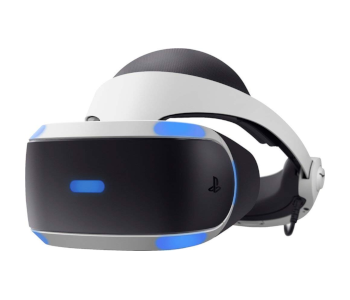
For people who played their games mainly on the PlayStation 4, getting the PSVR instead of an Oculus or HTC Vive was a no-brainer. The PlayStation 4 is already the most successful gaming console of this generation, and although the console’s hardware paled to what a high-end gaming PC could deliver, its simplicity and accessibility continue to make it appealing, even five years after it was first launched.
Although the PSVR has received no upgrades over the years, Sony continues to support the platform with a bunch of new games. Titles like Astrobot: Rescue Mission and Resident Evil 7 have given PSVR legitimacy as a VR headset that will appeal to all types of gamers. The platform has truly aged well, with upcoming titles like Iron Man VR and Dreams still generating a respectable level of anticipation.
Lastly, the appeal of PSVR is that it’s merely an accessory to what is already an excellent gaming platform. Through the years of its existence, the PlayStation 4 has been a platform for unforgettable games that are sure to be considered as all-time classics.
A long gestation period
There’s a distinct disadvantage to the fact that the PSVR is bound to a PlayStation gaming console: its upgrades will inevitably have to coincide with the upgrades of the console. The problem is that consoles only get upgraded every five to six years, which means that the VR technology will always be lagging behind its Oculus and HTC Vive counterparts.
Right now, the PlayStation 4 life cycle is coming to a close, and we are eagerly looking forward to the PlayStation 5 at the latter end of 2020. Sony has announced that the original PSVR will still be compatible with the PlayStation 5. However, all we have are rumors about the development of a “PSVR 2.0.”
Three years after the launch of the original PSVR, the VR headset has not received any upgrades aside from a minor one in 2017 that added HDR compatibility and integrated headphones. In terms of hardware, the PSVR is way behind the flagship Oculus and HTC Vive headsets. The only reason it still remains competitive is that it’s now become very cheap at less than $300 and that Sony still continues to release new games for the platform.
Relying on loyalty
PSVR (and the eventual PSVR 2.0) has one thing going for it – the fact that console gamers are a very loyal bunch. Sony has gained a lot of favor with how the PlayStation 4 performed, and this is sure to sustain interest in the PlayStation 5 and their VR platform. However, it’s very unlikely for PSVR to sway any owners of Oculus and HTC Vive headsets – it’s simply outclassed at this point.
Final thoughts
The market for VR headsets is now more active than ever, which makes us the ultimate winners. The evolution of VR technology over the last few years has been staggeringly rapid. With so many headsets coming out with new and upgraded features, it’s hard to imagine that the original Oculus Rift only came out a mere three years ago.
…And what a three years it has been for the VR headset industry. We’ve gone from cardboard headsets to external trackers for room-scale VR, to headsets with augmented reality, and now we have fully standalone headsets that have no cables whatsoever. All the naysayers that said that VR entertainment will never be a big thing only need to look at the strides that the industry has taken in the last three years to know that the market is saying otherwise. VR is here to stay, and may very well be the future.

